-
Posts
222 -
Joined
-
Last visited
-
Days Won
1
Content Type
Profiles
Forums
Gallery
Downloads
Blogs
Events
Store
Aircraft
Resources
Tutorials
Articles
Classifieds
Movies
Books
Community Map
Quizzes
Videos Directory
Posts posted by River
-
-
Love the black humour...

-
Latest Update...
Plane Wreckage Retrieved From Clarence River, Northern NSW
The Northern Star Newspaper
16th Apr 2014
POLICE divers spent hours on the bottom of the Clarence River at Ewingar yesterday attempting to recover pieces of wreckage from the Maule M-5 light plane, which came to grief there on Saturday.
After a painstaking operation lasting all day, the plane was finally dragged from its resting place and towed upstream to a waiting truck at about 5pm. The job started about 10am from Yates Crossing - a shallow causeway about 3km upstream - where a flat-bottomed SES boat borrowed from Lismore was launched into the Clarence to venture downstream to the crash site.
The wreck lay in a still section of the river about 20 metres wide, marked by the tyres of the upturned plane and an outline of its underside in the murky water. It appeared in one piece, but random bits of wreckage were in fact strewn across the river bottom. At first the three divers spent about an hour taking photos of the wreck site in preparation for the recovery. The various pieces around the impact zone were then retrieved by the divers, which took at least two hours.
About 15 police, including white-overalled Police Rescue officers, Lismore detectives, and officers from the Air Wing unit, along with local landowners and SES volunteers gathered on the riverbank to collect the bits of wreckage.
A truck with a crane attached could be seen on the road above the riverbank awaiting the chance to lift any wreckage back to Lismore for analysis. But police were unable to get the entire plane out of the water at the crash site; the hull had to be towed back upstream back to Yates Crossing and hauled from the water.
It is understood the pilot, Goonengerry resident John Crumpton, attempted CPR on the 11-year-old girl who died in the crash on Saturday morning, before trekking, injured, across the bush to the closest property for help.
POWERLINES are one of the most dangerous hazards for light plane pilots and are a common cause of fatal accidents, according to Lismore Aero Club chief flying instructor Bill Kiernan.
It is unknown what caused the Maule M-5 four seater to be flying below those heights when it struck powerlines across the Clarence River on Saturday morning, crashing into the river and killing an 11-year-old Murwillumbah girl. The 53-year-old pilot and 34-year-old father of the girl survived the crash. An Australian Transport Safety Bureau investigation is currently under way with a preliminary report due within 30 days.
Mr Kiernan said powerlines were incredibly difficult to spot and a common cause of fatal accidents."Powerlines over rivers are notoriously difficult to see," he said.
"They're not always big tall towers, sometimes they're just one or two wires running across."
Mr Kiernan also said the Northern Rivers, with many small rural landholdings, was one of the most dangerous regions for power lines in rural locations.
-End-
PS; I've tried to insert a number of photos showing the accident scene and the area were the aircraft was flying at the time of the accident, alas, using the iPad I'm finding it apparently unable to post photos as it won't bring up the URL where I have the photos stored on the iPad :-(
-
The Daily Examiner
Local Paper for Clarence Valley Region
Plane wreckage to be retrieved today
15th Apr 2014 6:51 AM
» Pilot trekked to find help after plane crash killed child
» Plane crash that killed girl being investigated
THE wreckage of the light plane that crashed on Saturday morning is expected to be retrieved from the Clarence River this morning in a major operation involving specialist police.
The Maule M-5 four seater is currently upside down and almost fully submerged in about 2m of water with only its wheels visible.
Lead investigator, Detective Sergeant Russell Ewing of Richmond Local Area Command, said Police Rescue crews had surveyed the crash scene on Sunday and again yesterday to plan an effective retrieval operation.
The terrain around the river where the plane crashed is marked by steep cliffs, which has forced emergency services crews to access the riverbank on foot.
Det Sergeant Ewing said it was hoped the plane would be hauled out of the water with the help of police divers and towed upstream.
It would be then collected at a point called Yates Crossing about 3km north of the crash site and put on the back of a truck.
The local SES crew from Tabulam was also expected to be involved in the operation.
Tabulam SES unit volunteer Heath O'Malley said the 20-volunteer crew was "there to support whichever organisation needs us".
Eight SES volunteers had supported the rescue operation on Saturday and on scene assistance and aiding communications between emergency services on the scene and their headquarters.
Det Sergeant Ewing said the pilot, 53-year-old John Crumpton had been spoken to by police about the crash at Lismore Base Hospital and would be formally interviewed as early as Thursday.
The surviving passenger, in a stable condition, would also be interviewed when possible.
There were no plans at this stage to release the names of the 11-year-old who died in the incident or her father, even though the family had been notified.
"Obviously everybody's in a very vulnerable state at the moment," Detective Sergeant Ewing said.
The Air Transport Safety Bureau had prepared to send an investigation team to the area on Sunday, but based on interviews of the pilot by local police "deemed it unnecessary", said an ATSB spokeswoman.
"Our investigation is continuing in consultation with police and the power company," she said.
"They have photos of the powerlines."
Upper Clarence River popular but treacherous for flying
THE Upper Clarence River has a history of flying accidents, according to Casino Aero Club president Russell Kennedy.
The river valley offers a diverse terrain for recreational pilots, including woodland, pasture, and rolling hills and cliffs, with the mighty Clarence presenting a spectacular feature from the sky.
Mr Kennedy said it was a popular area for pilots to fly over, but also a treacherous one due to the frequency of power lines.
"There's hidden wires all over the place," Mr Kennedy said.
"Some of the wires are up to 300 feet high; strung from high cliffs and rolling down.
"That river along there if you look into your history… there's been a lot of prangs.
"It's claimed a few."
Why the plane was flying so low is unknown, although Mr Kennedy said there were many possible reasons, including scouting for an emergency landing.
Mr Kennedy said the veteran pilot, Goonengerry resident John Crumpton, had stored his plane at the Casino Aerodrome for a little over a year.
The plane took off from there early on Sunday morning before picking up the 34-year-old father and 11-year-old daughter from Murwillumbah and continuing on to the Tenterfield area.
It was flying back in a general easterly direction when it crashed into the river about 11am, reportedly moments after striking power lines.
The 11-year-old girl died in the crash.
As soon as he received news about the crash, Mr Kennedy did a "head count" of the planes in hangars at Casino.
"That's when we realised [his] Maule was out flying, and probably about 1pm it was identified as a Maule," he said.
Mr Kennedy described Mr Crumpton as an "avid flyer" who had recently gone on an extended flight to north Queensland.
The Maule M-5 four seater owned by Mr Crumpton was also known as a safe and reliable plane.
"It can get in and out of tight places; a terrific performer," Mr Kennedy said.
"They use them at high altitudes because they're renowned for their horsepower. They're a tough old workhorse."
Mr Crumpton's plane, registration VH-HOG, was also well kept.
"My plane you would describe as average to good condition; this one was in showroom condition," Mr Kennedy said.
-
Follow up...
Girl, 12, killed in light plane crash
Sat, 12 Apr 2014 07:02:00 GMT
A 12 YEAR old girl was killed when a light plane she was a passenger in crashed in the state’s north.
The four-seater Maule M5 monoplane is believed to have hit power lines and then crashed into the Clarence River next to Ewingar Ridge Rd, Ewingar, 85km south-west of Casino, at 12.45pm on Saturday.
The girl’s father, 39, was winched to an ambulance helicopter and flown to Lismore Base Hospital in a serious but stable condition.
The male pilot, aged in his 50s, suffered minor injuries, but managed to free himself from the wreckage and alert authorities.
He has been taken by ambulance to Lismore Base Hospital also in a serious but stable condition.
Emergency services had to battle tough terrain to get the plane, which was floating upside in the river.
Police were unable to say where the flight had originated, only saying it was a “recreational flight” covering the Tenterfield and Casino area.
An Australian Transportation Safety Bureau spokesman said there were few details of why the plane may have hit power lines and three investigators would visit the scene on Sunday and interview the pilot.
-
Opinion: Land The Damn Helicopter
By Matt Zuccaro
Matt Zuccaro is the president of the Helicopter Association International.
February 26, 2014
So how was your day? Mine was not that great, I spent it reading NTSB helicopter accident reports. I don’t know about you but my level of frustration is at an all-time high.
One thing remains constant, no one has yet invented a new way to crash helicopters. The reports seem to repeat the same contributing/causation factors such as fuel exhaustion, continued flight into marginal weather resulting in inadvertent flight under instrument meteorological conditions (IMC) with subsequent loss of control, and in the minority of accidents, mechanical failures. Of note is a new factor appearing more and more in the accident reports — pilots who are under the influence of either prescription and over the counter medications with no reporting to the FAA.
In many accidents, there is prior knowledge that things are not well. With fuel exhaustion, most pilots are definitely aware that their fuel status is of serious concern resulting in uncertainty of the ability in reaching a fueling point. In weather-related incidents, we continue to see scenarios with pilots continuing on in less-than-desired weather conditions with difficulty maintaining visual flight rules (VFR). With regard to mechanical related situations, the pilot gets alerts from warning systems, and can hear or feel abnormal noises or vibrations. In potential medical incapacitation events, the pilot is aware of their substandard performance and diminished abilities in most cases.
With the above in mind and assuming an acceptable landing site is available, why don’t pilots exercise one of the most valuable capabilities of vertical flight, the ability to land anywhere? We already do this on a routine basis. We land on oil rigs and offshore platforms, at private residences, on corporate campuses, building rooftops, mountaintops and anywhere else we can safely operate.
So why don’t pilots who are faced with challenging environments and situations just land the damn helicopter? In a high percentage of accidents, this simple act would have broken the chain of events and prevented untold accidents.
I once had the unique opportunity to speak to a pilot who had survived such an accident, and queried him regarding his decision-making during this event and the possibility of making a precautionary landing as an option. He indicated he had not given it direct consideration and instead prioritized getting to the intended destination and mission completion.
In the past, he had given more thought to the scrutiny he would face if he did make a precautionary landing. Actually, I was not that surprised by his concerns since, in my early days of flying, I at times pondered the same issues. Luckily, not anymore.
Pilots normally associate precautionary landings with the local police showing up, their company incurring logistical and legal costs as well as being upset with the pilot, angry passengers who might not fly with that pilot or company again, the FAA wanting an explanation so they can start enforcement action, the press asking questions and writing a negative story and the scrutiny of other pilots.
Yes, these are all possibilities, but think about the reality of the situation, the decision-making going on and other options available. Option one: focus on the situation and safety concerns, make the precautionary landing, prevent the accident and have confidence that once you explain your decision making, all those you were concerned about will support your actions. Option two: don’t make the precautionary landing, kill everyone on the aircraft and maybe some on the ground. Call me crazy, but this seems like a no-brainer.
Obviously, the primary goal is to not get yourself into this situation in the first place. However last time I checked, none of us is perfect. If you have been flying any appreciable length of time you have found yourself in one of these situations before.
Accordingly, when a pilot makes a precautionary landing in the interest of safety, the industry and authorities have to recognize such landings as a normal practice and in the best interest of developing and maintaining a positive safety culture. This is a good thing.
The bottom line is, when appropriate, “Land and live.”
-end-


-
 1
1
-
-
Cessna Skycatcher Disappears from View
By Pia Bergqvist /www.flyingmag.com/Published: Feb 11, 2014
Related Tags: LSA/Sport, News, Aircraft
Cessna Skycatcher
There is new evidence that when Cessna Aircraft CEO Scott Ernest said at the NBAA Convention in October that the Skycatcher has "no future," he meant it. While no official word has come out of Wichita, Cessna has removed all traces of the LSA from the single-engine product line on its website, seemingly moving the Skycatcher program to the history books. Cessna did not immediately reply to our requests for comment.
Assuming the program is indeed done, it's a quiet demise for Cessna's lightest airplane after a troubled history. The Skycatcher was plagued with challenges from the start. The light sport model's tail design had to be revised after a prototype spun and crashed late in the development phase. There was negative reaction from the flying public after the Wichita, Kansas-based company announced it would produce the Skycatcher in China.
Then, in 2012, safety alert SA162-57-01R1 was released as a result of wing spar cracking, requiring mandatory spar improvements and the removal and replacement of a section of the leading-edge wing skin with segments containing new inspection access panels. Cessna covered the cost of the work, provided it was completed at an authorized service center within one year of the publication of SA162-57-01R1.
Another unpopular announcement was the increased price of the LSA, which Cessna had originally hoped to deliver for under $110,000 in 2007 dollars. That figure skyrocketed to $149,900 at the start of 2012.
These challenges combined to reverse the flow of excitement Cessna created when it first announced the Skycatcher program at EAA AirVenture in Oshkosh, Wisconsin, in 2007. People lined up at the booth to place their orders for the airplane and the company quickly secured several hundred deposits for the new LSA. Cessna had planned to ramp up production to 700 airplanes per year. However, four years after the first Skycatcher was delivered in December 2009, only about 200 Skycatchers have been delivered.
-end-
-
 1
1
-
-
Small airplane lands on cargo ship, cameras rolling - Dramatic landing promotes shipping firm.
November 7, 2013
Extreme small plane landing on a ship.
Jaap Rademaker’s landing on a cargo ship was captured in a YouTube video. Catch the touchdown at 2:42. Search Youtube...
Conditions were just right, so Jaap Rademaker decided to go for it: With cameras rolling, he set up for the approach to the deck of a cargo ship.
The target: about 60 meters of available deck, which had been cleared as an emergency landing site. He would have to approach from the left to avoid the ship’s bridge and a four- or five-meter-high bridge crane at the approach end. Rademaker’s Foxbat A-22 microlight has an approach speed of 40 to 45 mph, he said, and the ship plowed forward at about 9 knots. Winds were about 14 knots, he added.
Pilot Jaap Rademaker said landing on a cargo ship wasn’t his immediate objective when he flew his Foxbat A-22 near the vessel in the English Channel.
The approach was “absolutely perfect”—until about two meters above the deck, when airflow around the bow and sides tossed the aircraft in turbulence.
“I had a very dry mouth, and thought, ‘What have I done? How the hell am I going to get out of here?’” the U.K.-based Dutch pilot told AOPA in a phone interview. He kept control and landed the light airplane on the vessel in the English Channel, about 20 nautical miles south of the port of Folkestone in southeast England.
The Oct. 17 landing—captured on video from the air, the ship, and inside the cockpit—has attracted desired attention from the shipping world, Rademaker said. It’s also piqued the interest of pilots; the original video had more than 205,000 views on YouTube by Nov. 6, and a second video with higher-quality video was beginning to rack up plays.
Someone should land on this..!
Rademaker met Johan Hartman of the shipping firm Global Seatrade through his involvement in ship finance. Both pilots, the two men had the same thought while surveying the spacious, flat deck of one of Hartman’s new M2 Runner cargo ships: Someone should land on this.
The kernel of an idea grew in conversations with pilots he knows through the Headcorn Aerodrome-based Tiger Club, which bills itself as the “home of sport aviation in the UK.” Pilots Anna Walker and Brendan O’Brien advised him from their experience of truck-top landings at airshows, he said, before he set out on the flight accompanied by two aircraft with video equipment aboard (one with O'Brien at the controls). It was to be an aerial shoot of the airplane with the vessel, he said … and maybe something more.
“We kind of did not expect to be able to land on the ship,” he said. “…We kept it in mind as if conditions are perfect, it might be possible.”
The M2 Runner cargo ship is built to carry high-volume, lower-weight cargo such as wind generators, and has a spacious deck.
Rademaker, a 600-hour pilot who flies the U.K. equivalent of light sport aircraft, had no military flying experience that might prepare him for a carrier-type landing. He did have experience in microlights on short fields and an incentive to promote the ship building and operating company in which he invests. What better way to spotlight a new ship designed for high-volume, low-weight cargo than to land on the aircraft-carrier-style deck?
The captain of the ship, Bertus de Vries, had organized the filling in of lashing eye recesses on deck in case of an emergency landing and trimmed the bow as low as possible, Rademaker said. Although the ship couldn’t travel faster than 9 knots empty, conditions overall were good, he said.
He could think of no legal reason not to land on the ship: He was in a private airplane landing on a private ship with the consent of the owner. In a worst-case scenario, he said, he’d end up in the water without a penny back from the insurance company. With five guys ready with a lifeboat on the ship, a rotorcraft hovering overhead, and a dry suit to keep him warm, it was a risk he was willing to take.
‘A sensible man’
Rademaker in his Foxbat. He said the microlight’s high-lift wings were excellent for takeoff from the ship.
Rademaker had made several passes near the bridge and felt that he had perfect control. He could communicate with the other aircraft via radio, but his only link to the ship captain was through text message. The ship was headed toward land and could only maintain the current speed for 40 minutes, he texted. If he was going to land—and take off—he’d have to do it soon.
He set up for the approach, paralleling the boat until he passed the obstacles. Then he shifted to the right and descended to the deck. He knew to expect the turbulence when he got close to the deck, but he said he didn’t expect another disconcerting effect: At a meter or two above the deck, he lost many visual references. He could see the mast in front of him, but it was hard to determine how far away it was until he had set the aircraft down.
The ship pitched and rolled on the water. One of the crew grabbed the right strut, as planned, but no one appeared to secure the left side. The light airplane began to blow sideways, and the railing of the deck seemed awfully close. Keeping the controls forward, Rademaker opened the door and put out his foot to stop the airplane as someone came to grab the left strut.
Maritime officers Aalbert and Tom—Rademaker didn’t catch their full names—held the airplane so Rademaker could apply power for a short takeoff.
They lodged the left wheel in a lashing eye to keep the aircraft in place, and Rademaker had enough time to take a photograph with the crew, make sure the deck was clear for takeoff, and go. But takeoff proved to have an unexpected challenge: The tires slipped on the deck when he tried to run up the engine for takeoff.
Rademaker later expressed gratitude to the four men who came out to hold the aircraft in place as he gave it full power for his short takeoff. The video shows them straining to hold it back. The two on the outside let go first, and the remaining two held tight, slipping on the deck a bit before letting go in sync. The airplane lifted off, rocked its wings, and headed toward land.
Weeks after the landing, Rademaker marveled at how the stars had aligned: a willing and capable crew on the boat, camera crews in the air, and weather that made it all possible. “It was quite an operation in the end,” he said. Still, it was harder than he expected.
“I won’t do it again,” he said. “I will be a sensible man in the future.” But, he added, he’s glad he did it.
How's that!

-
-
My apologies guy, too long at work and too late at night... Re details of the low level Tornado photo here are the correct details. How I got Argentina into the mind, only coffee knows as damm it's nice drink late at night

"It depicts a Tornado, in a clean configuration, perfoming an aggressive left turn at ultra low level, most probably immediately after take-off. If you look closely to the picture (whose author is unknown), you’ll notice the aircraft wears the typical sharkmouth of the 155° Gruppo of the 50° Stormo of the Aeronautica Militare (Italian Air Force, ItAF), based in Piacenza. Look at the following images I took on Mar. 11 at Pratica di Mare, where a Tornado ECR is currently involved in a testing campaign with the ItAF Flight Test Center, the RSV (Reparto Sperimentale Volo).
Therefore, the aircraft is Tornado ECR, completely clean and without the refueling probe. That maneuver resembles the typical John Derry turn to the left performed at the beginning of each Tornado display by the 311° Gruppo Volo of the RSV. I analysed the EXIF of the image and I found that it was taken on Dec 18, 2008, at 14.09 LT, with a Canon EOS 350D, 234mm focal length, ISO400. On that day, Piacenza airbase was still closed (it reopened on Dec. 19) and the 155° was still operating from Cameri airbase (the deployment started at the beginning of Sept. 2008, even if the aircraft flew the first operative mission on Sept. 16, and ended on Feb 3, 2009, with a ceremony for the farewell to the Tonkas). Maybe the maneuver was performed at Cameri, perhaps by a test pilot of the RSV involved in some kind of testing activity, or simply by a pilot of the 50° Stormo during a test/acceptance sortie. For sure, it is not a normal take off or flyby."
Cheers gang

Rodger
-
Hi gang... Checking out the photo history it appears to be a Argentenian Air Force Tornado and upon running the photo through some of my businesses forensic photo analysis software it scrubs up as a bona-fired photo. Though, jeez that wing is close to the deck

Cheers,
Rodger
-
German Aviation Terms


AIRCRAFT---Der Fliegenwagen
JET TRANSPORT---Der Muchen Overgrossen Biggenmother Das Ist Fliegen Highenfaster Mit All Der Mach Und Flightenlevels. (Built by Boeing)
PROPELLER---Der Airfloggen Pushenthruster
ENGINE---Der Noisenmaken Pistonpusher Das Turnens Der Airfloggenfan Pushenthruster
JET ENGINE---Der Schreemen Skullschplitten Firespitten Smokenmaken Airpushenbacken Thrustermaker Mit Compressorsqueezen Und Turbinespinnen Bladenrotors. (Made by Pratt & Whitney)
CONTROL COLUMN---Der Pushenpullen Bankenyanken Schtick
RUDDER PEDALS---Der Tailschwingen Yawmaken Werks
PILOT---Der Pushenpullen Bankenyanken Tailschwingen Werker
PASSENGER---Der Dumbkopf Das Est Strappened En Der Baacken Mit Der Other Dumbkopfs Das Est Expecten To Leave Undgo On Scheduledtimen Und Arriven mit Der Luggagebags Somplaceneisen
STUDENT PILOT---Der Dumbkopf Das Learnen Fliegen Un Hopen To Jobenfinden Mit Der Airlinens
FLIGHT INSTRUCTOR---Der Timenbuilder Mit Less Den 1000 Hrs Multienginefliegen. Teachen Dumbkopfs To Fliegen Vile Waitenwatchen Fer Der Letter Mit Der Joboffering Frum United
AIRLINE TRANSPORT PILOT---Das Grosse Overpaiden Und Under Werken Whinencomplainer Biggen Schmuck Dat Fliegen Mit Das Big Airlinen
PARACHUTE---Der Stringencotten Das Est Usen To Floaten Der Tailschwingen Pushenpullen Bankenyanken Werker Down To Earthen Ven Der Fliegenwagen Est Kaputen FAA---Der Friggenfliegen Dumbkopf Schmucks Das Maken Alder Rulens Und Regulations
HELICOPTER --- Der Flingen Wingen Maschinen mit der Floppen Bladens dot ist Fliegen by der Dumbkopfs vas iss too Stupiden for Knowen dees Maschinens ees not Safen ver Fliegen.
END


-
 1
1
-
-
-
-
There was an interesting news items that received little coverage a while back in a Air Force exercise between the RAF new Typhoons and older aircraft that were used by the opposing Indian Air Force.
The Indians used tactics that the North Vietnamese used on the then 'super jet' of the day, the US F4 Phantom when it first arrived in Vietnam with no built-in gun and questionable pilot close-in manoeuvring performance.
The Indian Air Force aircraft were able manoeuvre in such a way that they managed to close right in very close and err personnel to the RAF Typhoons and much to the amazement were able to use their fighter aircrafts built-in gun and shoot them down..!!!
It transpired that the RAF pilots trained for either long range and over-the-horizon stand off missile attacks and were unprepared when the Indian fighter pilots managed to evade the missiles and close-in and out manoeuvre the Typhoon pilots. Ouch


-
BBC News...
"RAF fighter pilot and glider were a quarter of a second away from disaster before back-flip manoeuvre.

A fighter pilot dodged a fatal collision with a glider by back-flipping his jet just 250ft above the ground.
The Tornado – on a low-level training mission – was tearing through a valley at 500mph when the tiny aircraft appeared.
With just a quarter of a second to perform the heart-stopping inverted loop manoeuvre, or “bunt”, the Top Gun pilot managed to take his jet just 100ft below the glider.
The collision risk was “very high”, he told the UK Airprox Board’s near-miss probe.
The Tornado pilot was practising mid-air refuelling and weapons training close to Aviemore, in the Cairngorms, in a sortie out of RAF Lossiemouth.
The privately owned slow-moving white DG-808C motor glider, with a 22-yard wing span, was flying mid-afternoon in a circular route from Portmoak, Kinross, in April.
Steering clear of the Highland Wildlife Park, the £9.4million Tornado fighter- bomber pilot only saw the glider – which was difficult to pick out against the sky – when it was just 500 yards away.
The report said: “He bunted and passed 100ft below it. The pilot noted that he had seen the glider at the very last moment.”
The safety of both aircraft was compromised, the UKAB report concluded. And the highly trained pilot avoided a mid-air crash which would have killed them."
I take it from this incident report the RAF pilot pushed his stick forward into a negative G dive and pulled up at around the 150 feet mark... Does that sounds about right?

-
I all most fell off my rocking chair (saved only by my long-tailed cat
 ) when I first read that news report out of the US news media on the 'names' of the flight crew..! If it was not so disturbing by being released by the NTSB and do easily to see it was a set-up it would have been hilarious. The names were amazingly so funny it really did break me up until I regained my err composure and realized the seriousness and utter disrespect towards both the flight crew, the company and the tragic outcome.
) when I first read that news report out of the US news media on the 'names' of the flight crew..! If it was not so disturbing by being released by the NTSB and do easily to see it was a set-up it would have been hilarious. The names were amazingly so funny it really did break me up until I regained my err composure and realized the seriousness and utter disrespect towards both the flight crew, the company and the tragic outcome.But humans will be human even in the darkest hour...

-
A cople of Chinese men broke into a liquor store late one night, and one said to the other. . ." IS THIS WISKEY ?"
His mate said. . . .
"not half as wiskey as robbing bank "

-
With all due respect
A US Air Force C-141 was scheduled to leave Thule Air Base, Greenland at midnight. During the pilot’s preflight check, he discovers that the latrine holding tank is still full from the last flight. So a message is sent to the base, and an airman who was off duty is called out to take care of it.
The young man finally gets to the air base and makes his way to the aircraft, only to find that the latrine pump truck has been left outdoors and is frozen solid, so he must find another one in the hangar, which takes even more time. He returns to the aircraft and is less than enthusiastic about what he has to do.
Nevertheless, he goes about the pumping job deliberately and carefully (and slowly) so as to not risk criticism later.
As he’s leaving the plane, the pilot stops him and says, “Son, your attitude and performance has caused this flight to be late, and I’m going to personally see to it that you are not only reprimanded, but also punished.”
Shivering in the cold, his task finished, he takes a deep breath, stands up tall and says, “Sir, with all due respect, I’m not your son; I’m an Airman in the United States Air Force. I’ve been in Thule, Greenland for 11 months without any leave, and reindeer are beginning to look pretty good to me. I have one stripe; it’s two-thirty in the morning, the temperature is 40 degrees below zero and my job here is to pump shit from your aircraft.
Now just exactly what form of punishment did you have in mind sir?”

-
 3
3
-
 1
1
-
-
These cloud photos were taken over Brisbane yesterday... A most unusual sight indeed..!

I looked up weather photos on the web and appears this is what we were looking at.
"Fallstreak hole
From Wikipedia, the free encyclopedia
A fallstreak hole, also known as a hole punch cloud, punch hole cloud, skypunch, canal cloud or cloud hole, is a large circular or elliptical gap, that can appear in cirrocumulus or altocumulus clouds.
Such holes are formed when the water temperature in the clouds is below freezing but the water has not frozen yet due to the lack of ice nucleation particles (see supercooled water). When ice crystals do form it will set off a domino effect, due to the Bergeron process, causing the water droplets around the crystals to evaporate: this leaves a large, often circular, hole in the cloud.
It is believed that the introduction of large numbers of tiny ice crystals into the cloud layer sets off this domino effect of evaporation which creates the hole.
The ice crystals can be formed by passing aircraft which often have a large reduction in pressure behind the wing- or propellor-tips.
This cools the air very quickly, and can produce a ribbon of ice crystals trailing in the aircraft's wake.
These ice crystals find themselves surrounded by droplets, grow quickly by the Bergeron process, causing the droplets to evaporate and creating a hole with brush-like streaks of ice crystals below it.
The articles by Westbrook and Davies (2010) and Heymsfield et al. (2010) explain the process in more detail, and show some observations of their microphysics and dynamics. Such clouds are not unique to any one geographic area and have been photographed from many places.
Because of their rarity and unusual appearance, as well as very little exposure in media, fallstreak holes are often mistaken for or attributed to unidentified flying objects."

-
 4
4
-
 3
3
-
-
A minister dies and is waiting in line at the Pearly Gates. Ahead of him is a guy who’s dressed in sunglasses, a loud shirt, leather jacket, and jeans.
Saint Peter addresses this guy, “Who are you, so that I may know whether or not to admit you to the Kingdom of Heaven?” The guy replies, “I’m Joey Shasta, retired pilot, of Pittsburg, PA.”
Saint Peter consults his list. He smiles and says to the pilot, “Take this silken robe and golden staff and enter the Kingdom.”
The pilot goes into Heaven with his robe and staff.
Next it’s the minister’s turn. He stands erect and booms out, “I am Joseph Snow, pastor of Saint Mary’s for the last 43 years.” Saint Peter consults his list. He says to the minister, “Take this cotton robe and wooden staff and enter the Kingdom.”
“Just a minute,” says the minister. “That man was a pilot and he gets a silken robe and golden staff. How can this be?”
“Up here, we work by results,” says Saint Peter. “While you preached, people slept; while he flew, people prayed.”


-
 1
1
-
 4
4
-
-
Talking about us riding our bikes and the various joys and bings we've just about all had. I saw this photo of a very cool young lady in what appears to be a possible time trial. Get hold of the bike with its foot operated clutch and hand operated gear lever and... Just how err determined the young lady is. Not sure of the date but possibly around the 1920's ?

 cheers, Rodger
cheers, Rodger-
 1
1
-
-
This comes from a top secret recording describing what happened in a soviet cockpit during approach to JFK at IFR conditions:
Captain: “500 ft. low visibility, runway seems to be short. Co-pilot, lower flaps to 30 degrees…”
Co-Pilot: “Flaps down at 30.. check.”
Captain: “300 ft, low visibility, runway looks very short… Co-pilot, lower to 45 degrees !!!”
Co-Pilot: “Flaps down at 45…check.”
Captain: “100 ft !!! Runway very short !!! “Co-pilot, lower flaps to emergency – 90 degrees down!!!
Co-Pilot: “Flaps down to 90 degrees ready to land…check.” Aircraft lands and breaks immediately…
Captain: “*wipes off the sweets and sighs*… “Ohh they make the runways very so short in the west….”
Co-pilot: “Yes…*pointing out the window*…but they are so very very wide…”


-
 1
1
-
-
And to think that we (Australian Army) would often be either picked up or dropped off their at the Casino aerodrome by RAAF C-130 Hercules aircraft back in the late 1960's and early 70's. The runway was one of the few that was specially grooved to allow for major wet weather landings, etc.
An of all the land available around Casino, the local council used the western end of the aerodrome to place a mobile home/caravan park there! Brilliant eh!

Rodger
-
 1
1
-
-
Hi Phil, welcome to the aviation world where 'our media' are all instant experts on the how and why's of flying the Big Boeing triple 7... Reading the well known err professional pilots forum thread on this accident, man... Has it lit up all the media, aviators, sim flight computer jocks and the occasional genuine airline pilot trying to all analyses and hang one and all involved makes your humble comment right at the bottom of the list. This mob are so far in front of you, it make one think you are sane Cheers RodgerOh, well silly me,. . . I thought I was having a "Go" at the media and discussing something non-specific. . . . . and actually referred to the fact that the media had MENTIONED airspeed. . .which IS specific. . .SORRYWon't fall into that PC trap again.
I shouldn't really comment at all I guess, as I'm only a desk pilot and have never flown a Boeing 777 at all ( not even in a sim ) Note to self - put all future posts thru the Bullcrap filter so I don't annoy anyone else on the forum.
( Phil disappears into the darkness kicking teddies all over the car park. . . .)
!


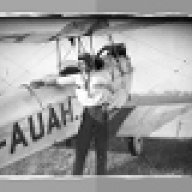
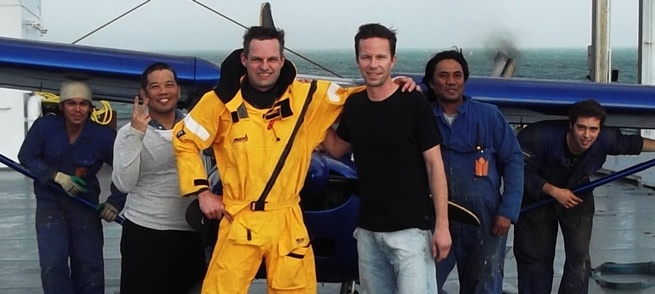
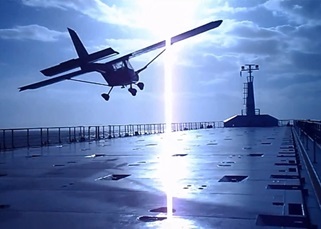
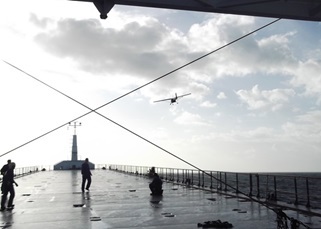
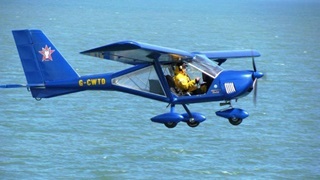
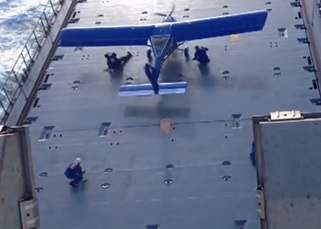
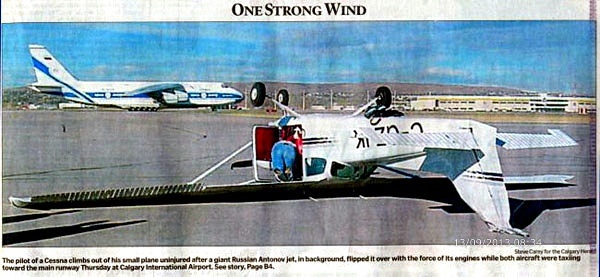

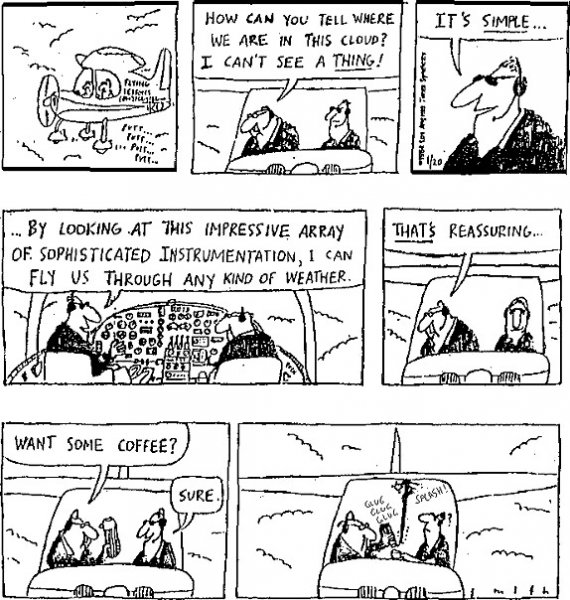


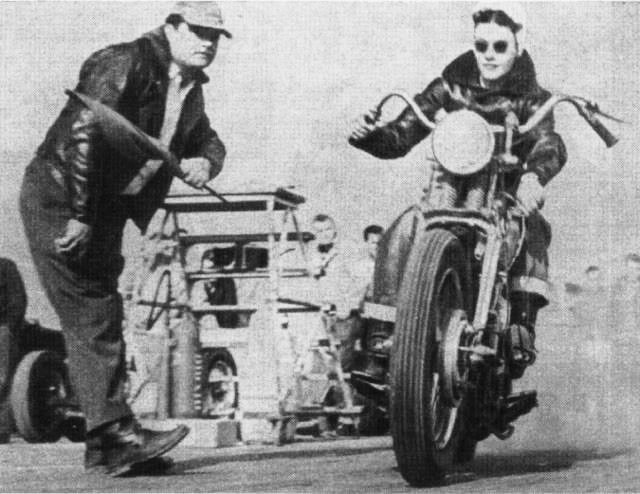
HOWARD HUGHES - RIP
in AUS/NZ General Discussion
Posted
I am genuinely very saddened with the passing of arguably one of Australia's great men in our world of ultralight, recreational and experimental aviation. Howard always had passion, vision and deadication to the 'other side' of big players in our world of what's now known as recreational aviation - Mate, you'll be sorely missed. Your inspiration, the building of many aircraft that many of us have enjoyed flying and your music andhumour are what legend's are made off - RIP old mate. In memory of a great aviator, may we celebrate his career.
Rodger Henry (Lightwing flyer, plus others...)